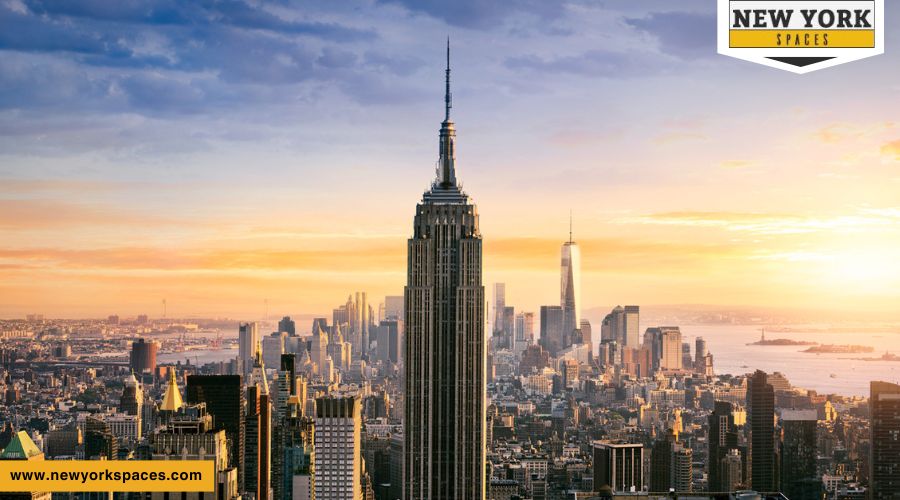The Empire State Building, a towering symbol of ambition and architectural prowess, has dominated the New York City skyline since its completion in 1931. With its iconic Art Deco design, it not only defined an era but also set a benchmark for skyscrapers around the world. This blog post delves into how the Empire State Building compares with other global skyscrapers in terms of design, height, and cultural impact, highlighting its unique place in the architectural tapestry of the world.
How Does the Empire State Building Compare with Other Skyscrapers Globally?
In the global panorama of skyscrapers, the Empire State Building distinguishes itself through its architectural heritage, standing as a paragon of the Art Deco movement with its timeless design and historical resonance. While contemporary giants like the Burj Khalifa and Taipei 101 surpass it in sheer verticality, the Empire State Building’s allure lies in its synthesis of form, function, and symbolism. Its historical construction during the Great Depression, innovative use of steel framing, and limestone facade underscore a narrative of technological triumph and enduring optimism.
Unlike its taller successors, which embody the latest in sustainable design and digital integration, the Empire State Building has gracefully adapted to modern standards, achieving LEED certification through significant retrofitting efforts. Its cultural footprint, etched into the fabric of global media, renders it an enduring icon of not only New York City but also the collective human spirit’s aspirations. In essence, while other skyscrapers may reach greater heights, the Empire State Building’s unique blend of historical significance, architectural beauty, and cultural resonance continues to hold a singular place in the global skyline.
The Empire State Building – An Art Deco Masterpiece
The Empire State Building stands as a towering testament to the Art Deco movement, which was at its zenith during the 1920s and 1930s. This architectural style is celebrated for its rich decorations, geometric patterns, and vertical emphasis, all of which are epitomized in the building’s design. The façade features intricate motifs inspired by natural and geometric shapes, streamlined stainless steel ornamentation, and setbacks that not only comply with zoning laws but also enhance the building’s slender profile. The innovative use of a steel frame allowed for a dramatic vertical silhouette, while the limestone cladding added an air of permanence and gravitas, setting a new benchmark in skyscraper construction.
Evolution of Skyscraper Aesthetics
The evolution of skyscraper design from the Art Deco era to contemporary times has been marked by significant shifts in aesthetics and underlying principles. Modern skyscrapers often embrace the principles of neo-futurism, a movement characterized by dynamic forms, cutting-edge materials, and a focus on environmental sustainability. This shift is evident in the designs of structures like the Burj Khalifa and the Shanghai Tower, which eschew traditional straight lines for twisting, fluid forms that defy conventional architectural norms. These buildings reflect a futuristic vision, incorporating smart technologies and green features to reduce their environmental footprint while pushing the boundaries of design and engineering.
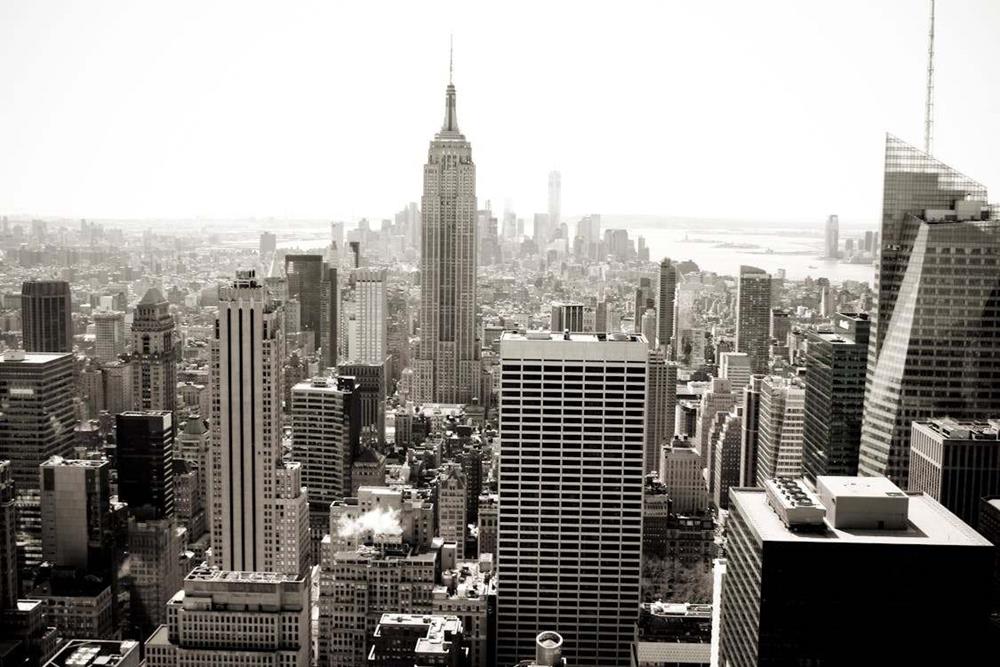
Technological Advancements in Skyscraper Design
The construction and aesthetic appeal of modern skyscrapers are heavily influenced by advancements in technology and materials. Innovations such as high-strength concrete, advanced steel alloys, and glass curtain walls have transformed the way skyscrapers are built, allowing for taller, lighter, and more energy-efficient structures. Structural engineering breakthroughs, including tuned mass dampers and outrigger systems, have enhanced the stability and resilience of tall buildings, enabling them to withstand natural forces like wind and earthquakes. These technological advancements have paved the way for architectural marvels like the Burj Khalifa and the Shanghai Tower, which combine form and function in unprecedented ways.
The Legacy of the Empire State Building in Modern Skyscraper Design
The Empire State Building’s influence on modern skyscraper design is profound and far-reaching. Its blend of aesthetic elegance and structural innovation has inspired architects to explore new possibilities in combining form with function. The building’s success in integrating Art Deco styling with a steel-frame structure paved the way for future designs that balance artistic expression with technological advancement. Today’s architects continue to draw inspiration from the Empire State Building, seeking to emulate its iconic status by creating buildings that not only reach for the skies but also push the envelope in design and sustainability.
The Dialogue Between Past and Present in Skyscraper Architecture
The ongoing dialogue between traditional and contemporary designs in skyscraper architecture reflects a dynamic exchange of ideas across generations. This conversation is not merely about aesthetics but encompasses a broader discourse on material innovation, construction techniques, and environmental stewardship. As architects and engineers build upon the legacy of iconic structures like the Empire State Building, they also strive to address the challenges of the modern world, including urban density, climate change, and the need for sustainable development. This interplay between past and present ensures that the skyscrapers of tomorrow will continue to evolve, embodying the aspirations and technological prowess of their time while respecting the architectural milestones that came before them.
The Evolution of Skyscraper Heights from the Empire State Building to Today
The Empire State Building’s completion in the early 20th century marked a defining moment in the architectural world, symbolizing not just the triumph over the economic despair of the Great Depression but also humanity’s unyielding aspiration to conquer the skies. At 1,454 feet, including its antenna, it stood as the world’s tallest building, a record it proudly held for nearly 40 years, showcasing the pinnacle of what was achievable with the era’s technology and engineering prowess.
- Setting a New Standard: The Empire State Building was more than just a tall structure; it was a testament to human ingenuity and the spirit of an era that believed in reaching for the impossible. Its height was not just a numerical achievement but a monumental leap in architectural and engineering capabilities, setting a new standard for what a skyscraper could be.
- The Challenge of Modern Titans: As technology advanced, so did the ambition to build ever taller. The Burj Khalifa, reaching an astonishing 2,722 feet, epitomizes this modern quest for height, utilizing advanced materials and engineering techniques far beyond what was available during the construction of the Empire State Building. This leap in height is not just a reflection of technological advancement but a continuation of the human desire to push the boundaries of possibility.
- The Role of Innovation: The significant height difference between the Empire State Building and modern skyscrapers like the Burj Khalifa underscores the rapid evolution of construction technologies and materials. Innovations such as high-strength concrete and wind-tunnel testing have enabled architects and engineers to design buildings that not only reach higher into the sky but also withstand the environmental challenges that come with such heights.
- Reflecting on Aspirations: The race for height among skyscrapers reflects a broader human inclination toward overcoming limitations and aspiring for greater achievements. The Empire State Building’s role in this ongoing journey highlights the intersection of ambition, technology, and artistic expression in the quest to define city skylines around the world.
The Empire State Building stands not merely as a relic of its time but as a beacon of progress, its legacy woven into the fabric of architectural innovation and human endeavor. As skyscrapers continue to reach new heights, the story of the Empire State Building remains a poignant reminder of the journey from the ambitions of the past to the technological marvels of the present and beyond.
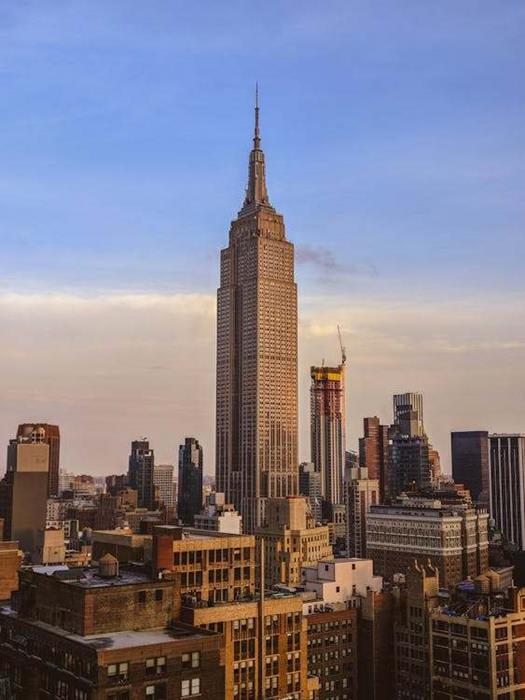
Cultural Iconography – The Empire State Building’s Enduring Legacy
The Empire State Building transcends its physical presence, embedding itself deeply within the fabric of American culture and gaining recognition across the globe. Its towering form has become more than just an architectural feat; it is a cultural symbol, representing the aspirations, resilience, and dynamism of New York City and, by extension, the American Dream.
Emblem of American Culture
The Empire State Building stands as a testament to the ingenuity and ambition that characterize the American spirit. Constructed during the Great Depression, it emerged as a beacon of hope and a symbol of America’s indefatigable will. Its prominence in the New York City skyline makes it an emblem of the city’s architectural beauty and its relentless pursuit of progress, reflecting the broader cultural ethos of the United States.
A Muse for the Arts
The building’s influence extends far into the realms of film, literature, and art, where it has been immortalized as an iconic backdrop and character in its own right. From its dramatic role in “King Kong” to its romantic symbolism in countless films and novels, the Empire State Building has been woven into the narrative fabric of many stories, embodying themes of ambition, love, and the quintessential New York experience. Artists and filmmakers have long been captivated by its stature and symbolism, using it to convey a range of emotions and narratives that resonate with audiences worldwide.
Symbolic Representation
The Empire State Building is more than just a structure; it is a symbol of New York City and the aspirations it embodies. It represents the city’s architectural ambition and its role as a melting pot of cultures, ideas, and dreams. The building’s ability to inspire awe and admiration reflects the broader American Dream, symbolizing the idea that through hard work and determination, anything is achievable.
Cultural Impact Compared
While the Empire State Building holds a special place in American culture, other skyscrapers around the world have also captured the imagination of their cities and countries. The Willis Tower, formerly known as the Sears Tower, dominates the Chicago skyline and symbolizes the city’s architectural innovation and economic power. Similarly, the Petronas Towers in Kuala Lumpur are a source of national pride for Malaysia, representing the country’s rise on the global stage and its embrace of modernity while retaining cultural identity. Each of these skyscrapers, much like the Empire State Building, serves as a cultural and architectural landmark, reflecting the unique spirit and aspirations of their respective locales.
The Empire State Building’s cultural significance cannot be overstated. It is a monument that encapsulates the essence of New York City and the broader American ethos, serving as a constant source of inspiration and a symbol of what humanity can achieve. Its impact on culture, art, and the collective consciousness demonstrates the profound influence architecture can have on society, transcending its primary function to become a lasting icon of cultural identity and aspiration.
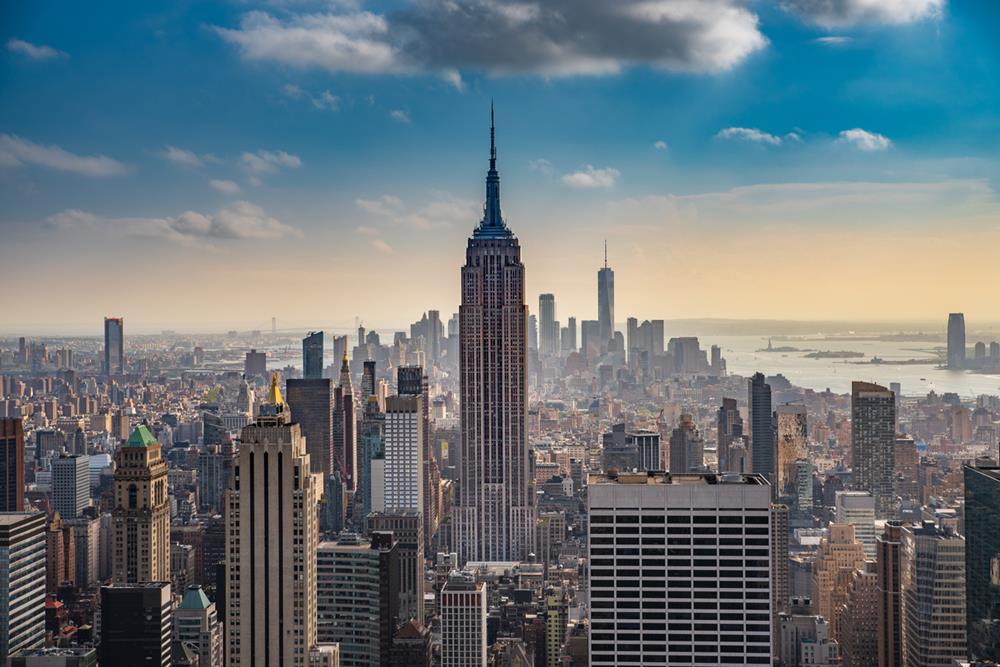
Environmental and Social Considerations
The Empire State Building’s journey into the 21st century is marked not only by its iconic status but also by its commitment to sustainability and environmental stewardship. This commitment is reflected in its LEED certification, a testament to its modern sustainability efforts. Such considerations set a precedent for newer skyscrapers, which incorporate advanced environmental features, contributing to urban sustainability. Moreover, the social impact of skyscrapers, including their role in urban development, skyline aesthetics, and community responses, is profound, shaping the cities they inhabit in various ways.
- Sustainability in the Sky: The Empire State Building’s LEED certification underscores a significant shift towards sustainability within the realm of historic skyscrapers. Through a series of retrofitting projects, the building has reduced its energy consumption dramatically, setting a benchmark for how older structures can adapt to contemporary environmental standards. These efforts include upgrading windows, insulation, and lighting systems, along with installing more efficient heating and cooling mechanisms. This transformation not only speaks to the building’s enduring legacy but also to a broader commitment to environmental responsibility within the architectural community.
- The Social Dimension of Skyscrapers: Skyscrapers play a significant role in urban development, influencing not just the skyline but also the social fabric of the cities they inhabit. They can be symbols of economic power and cultural identity, contributing to a city’s global image and appeal. However, their development also raises questions about urban density, public space, and the balance between commercial and residential needs. The Empire State Building, for instance, has contributed to New York City’s identity as a bustling metropolis, while also serving as a tourist attraction that brings people together from around the world.
- Pioneering Environmental Features in New Skyscrapers: Contrasting with the Empire State Building’s retrofitting efforts, many new skyscrapers are designed from the ground up with sustainability in mind. Buildings like the Shanghai Tower and the One Central Park in Sydney feature wind turbines, rainwater recycling systems, vertical gardens, and energy-efficient glass facades. These innovations not only reduce the buildings’ carbon footprints but also contribute to a more sustainable urban environment, setting new standards in green building design and construction.
- Community Responses and Urban Aesthetics: The aesthetics of skyscrapers significantly impact community responses and the overall perception of urban spaces. While some view these towering structures as symbols of progress and innovation, others may see them as imposing or out of scale with their surroundings. The Empire State Building, with its Art Deco design, has been largely celebrated for enhancing New York City’s aesthetic appeal. In contrast, newer skyscrapers face the challenge of integrating into existing urban landscapes in a way that respects historical contexts and community sensibilities.
The Empire State Building’s commitment to sustainability, alongside its cultural and architectural significance, highlights the complex role skyscrapers play in modern urban environments. As these structures evolve, their environmental features and social implications continue to shape urban landscapes, reflecting the changing priorities and values of society. The conversation around skyscrapers is thus not only about reaching new heights but also about fostering sustainable, inclusive, and aesthetically pleasing urban spaces for future generations.
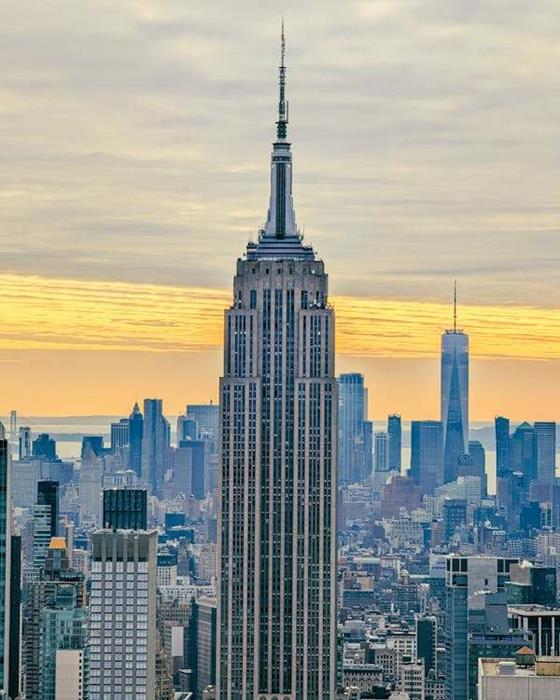
The Future of Skyscrapers – Navigating Heritage and Innovation
The trajectory of skyscraper design is poised at an exciting juncture, blending the legacy of iconic structures like the Empire State Building with the promise of future innovations. As architects and engineers explore new frontiers in technology and materials, the conversation continually returns to how historical landmarks maintain their relevance in an era that increasingly values sustainability, efficiency, and adaptive reuse.
Embracing Emerging Technologies and Materials
The future of skyscraper design is intrinsically linked to advancements in technology and the development of new materials. Innovations such as carbon fiber, aerogel insulations, and self-healing concrete offer the potential to construct taller, more energy-efficient, and environmentally friendly buildings. Moreover, the integration of smart technologies promises skyscrapers that are not only structurally advanced but also responsive to their inhabitants’ needs and environmental conditions, heralding a new era of intelligent buildings.
The Role of Sustainable Design
Sustainability has become a central focus in the evolution of skyscrapers, with future designs likely to emphasize green energy sources, water conservation, and vertical gardens. These features aim to reduce the environmental impact of high-rise buildings and improve urban air quality, contributing to the health and wellbeing of city dwellers. The challenge lies in seamlessly integrating these sustainable practices without compromising the architectural integrity and functionality of skyscrapers.
Heritage vs. Innovation – Finding the Balance
As we look to the future, the architectural discourse will increasingly focus on finding the right balance between preserving the historical and cultural significance of buildings like the Empire State Building and pushing the boundaries of innovation. This involves not only technological and material advancements but also a thoughtful consideration of the skyscraper’s role within the urban fabric and its impact on communities and the environment.
Conclusion
The Empire State Building’s stature as an architectural marvel extends far beyond its physical dimensions, embodying the zenith of human ambition, innovation, and the enduring desire to transcend boundaries. As a beacon of the Art Deco era and a pioneer in skyscraper design, it set a benchmark for future generations, marrying aesthetics with functionality. Its ongoing relevance, underscored by sustainability efforts and cultural significance, continues to inspire architects and dreamers alike. In the grand tapestry of global skyscrapers, the Empire State Building stands not merely as a testament to what was achieved in the past but as an enduring symbol of the limitless potential of human creativity and the perpetual aspiration to reach for the skies.

